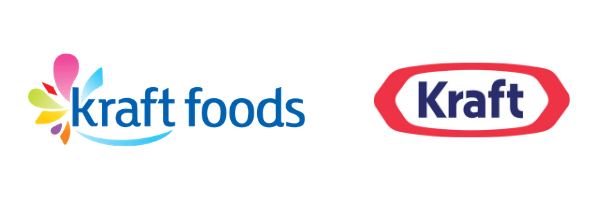
Companies consider a rebrand because, over time, perceptions change, people change, and ideas change. The brand identity that you developed when you launched may no longer be resonating with your target audience. There are several reasons for a food or beverage brand to consider rebranding as part of their business strategy.
When to Consider a Rebrand
You’ve Been Around for Decades
If you’re a legacy food or beverage brand that’s been around the block, your image may no longer reflect the times. To stay relevant, you may need to rebrand.
You’ve Extended Your Product Line
If you’ve extended your product line, you may want your new products or services to appeal to a larger audience or an entirely new demographic. To reach them, you may need to rebrand.
You’re in New Markets
If you’re launching in new markets, you may need to reach a new set of customers who may be different than your target audience. To achieve your goals, you may need to rebrand.
You’re Attempting to Overcome a PR Crisis
If you’re trying to overcome an unfortunate PR crisis, you must do everything you can to repair your company’s reputation as quickly as possible. To turn things around once you’ve weathered the storm, you may need to rebrand.
Your Competitors are Eating into Your Market Share
And, finally, if the competitors in your category are eating into a large percentage of your market share, you need a strategy to get back in the game. To win over new customers and regain lost ones, you may need to rebrand.
What to Consider Before Rebranding
Ok, so you’ve decided it may be time for a rebrand. What now? Well, it’s important to remember that a successful rebrand goes beyond simply tweaking your logo. The goal of a successful rebrand is to give your company a fresh, new look while still staying true to your brand’s core values and mission.
Mapping Your Brand Story
Before moving forward with a rebrand, stop to consider if your brand’s story, that’s built upon your values and mission, is still making an impact. Brand stories allow consumers to connect with your company. They build trust and loyalty in order to keep customers coming back again and again. If your brand story has weakened over time or was diluted to begin with, it’s time to go back to the drawing board to strengthen the overall public perception of your company.
Assessing Costs
In addition to developing a new branding strategy that will set you up for long-term success, you’ll also need to consider the cost. The rebranding process involves a thoughtful strategy connecting your new visual identity to your brand story and, of course, a new logo. Once the logo and new visual identity have been established, you’ll have to apply the new look to your online presence, including your website, social media, and email signatures as well as your print materials including stationery, business cards, advertising materials, and signage.
Navigating Internal and External Opinions
That last step of the rebranding process is to announce the changes to your internal team as well as the public via a news release, an announcement on your website, or a comprehensive PR campaign. Keep in mind, this process can be especially tricky because most people associate a rebrand with a new logo, when, in fact, it goes much deeper. Kraft Foods is one example of a CPG company that has fallen victim to an unsuccessful rebrand.

How to Move Forward with a Rebrand
Rebranding requires careful consideration and planning. If you feel that you need to rebrand in order to be more successful in your category, then the first step is to consider whether you have the right resources on your internal team or if you need to recruit an outside partner to help.
If you’re working with your team, put together a committee to evaluate public perceptions of your brand and your brand’s story, then adopt a plan for developing a new visual identity. When working with an outside partner, agree on research methods and an overarching strategy before moving onto the creative process.
Ready to discuss a potential rebrand? Let’s talk.


